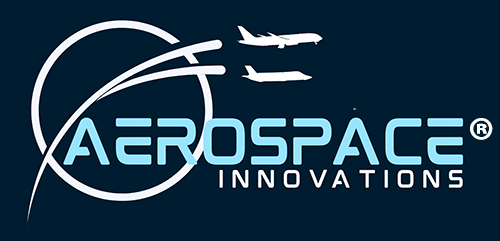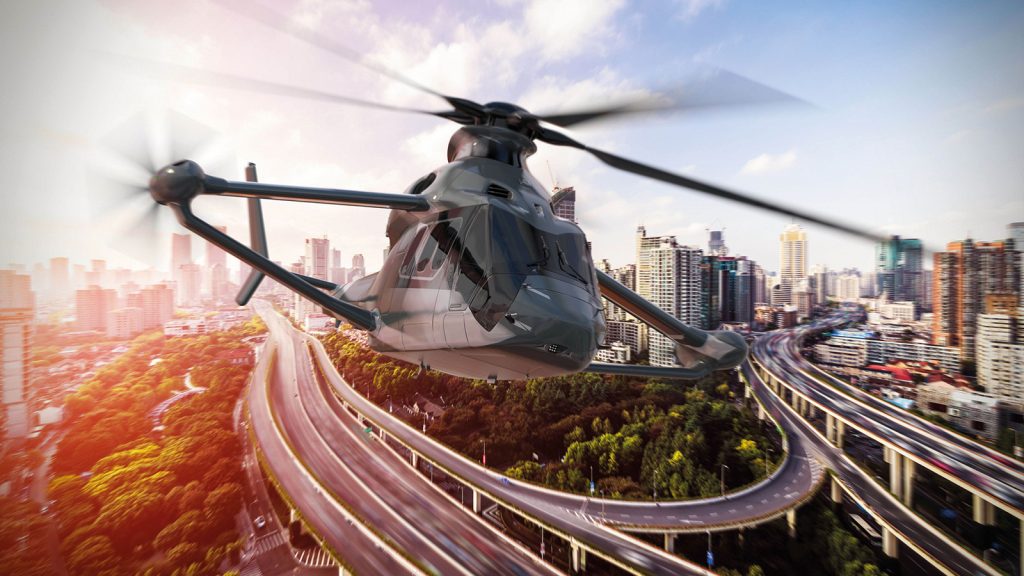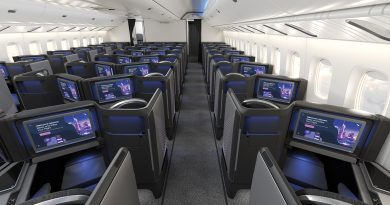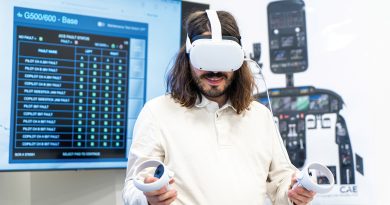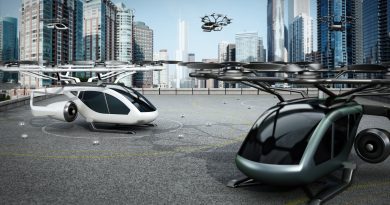Aircraft Measurement Testing Flies High
Ensuring passenger safety by validating components and evaluating performance
Modern aircraft systems rely on precise measurement data to meet strict standards that confirm aircraft fly safe and can hold up to regular use and the elements over time. Measurement testing confirms successful operation under large temperature fluctuations, high vacuum environments, harsh atmospheric conditions, and even severe wear and impact forces.
“Instrumentation and measurement tools play a vital role in both enhancing and validating safety of a wide range of aircraft types and in the optimization of flight performance, safety, efficiency and emissions through aerodynamic optimization,” says Iain Gordon, General Sales Manager, Evolution Measurement, Andover, United Kingdom. “In order to improve these parameters, understanding and therefore measurement, is essential and this is an important through all the development and testing phases and into daily operational service.”
Precision measurement is an absolute necessity because even the smallest error can have significant consequences. Aircraft components must consistently meet exacting tolerances to ensure safety and performance. From the alignment of intricate components to the final inspection of aircraft parts, precision tools play a vital role in maintaining these standards. To ensure the reliability of data acquisition and transmission during testing, Berlin, Germany-based imc Test & Measurement’s flight testing system uses a telemetric data transmission. This is based on the IRIG 106 part telemetry standard, which ensures interoperability in aeronautical telemetry applications.
“At the heart of both flight test and test stand applications is a distributed and networked multi-channel data acquisition system capable of measuring hundreds of analog signals and a wide range of digital industrial buses such as Ethernet, CAN, RS232, RS422, RS485, ARINC-429, ASCB-D, MIL-STD-1553B,” says Bernd Dippold, Key-Account Manager Aerospace at imc Test & Measurement. “In addition, virtually any data protocol can be captured, analyzed and processed via a programmable interface. Additionally, imc also provides data acquisition solutions for rotating components. In flight test applications, this large number of channels is often used to measure a variety of signals and record parameters across the entire aircraft, such as strain gauges, NVH, thermocouples and temperature sensors, or voltages.”
Martin Stierli, Industry Lead Aerospace at Kistler Group, Winterthur, Switzerland, says, “Flight vibration testing is vital to verify the simulated data with the actually built structure. Impact force measurements can provide essential insights for bird strike events. There are countless other tests that are necessary for an aircraft.” In production, consistent quality is essential. “Precisely measured and controlled joining or welding forces or regularly calibrated torque tools are just some examples where measurement solutions can make a significant difference in safety,” Stierli adds.
Instrumentation Insights
Las Winberg, Product Manager at GRAS Sound & Vibration, a subsidiary of Axiometrix Solutions in Holte, Denmark, confirms not only measurement tooling and instruments’ importance in aerodynamic testing, but also noise and vibration analysis, and structural integrity verification during the design and manufacturing phases. “Accurate measurement data are crucial for optimizing designs, meeting regulatory requirements, and enhancing passenger comfort. Commonly used tools include wind tunnel microphones, precision accelerometers, strain gauges, and data acquisition systems. At GRAS Sound & Vibration, our microphones, including our specialized UTP (ultra-thin precision) microphones, are particularly valued for their reliability in challenging testing environments.”
These instruments aim to uncover critical insights into the aerodynamic, acoustic, and structural characteristics of aircraft and their components. For example, Winberg says they can measure sound pressure levels to evaluate noise emissions or detect vibration patterns that may indicate fatigue or design inefficiencies. “The results provide engineers with actionable data to refine designs, improve fuel efficiency, and enhance overall safety. By simulating real-world conditions, these tools allow for adjustments before costly production phases.”
Measurement results deliver important insights to fine-tune simulation models and provide an essential reality check. When an aircraft body or wing is excited, piezoelectric accelerometers deliver detailed information about the structure. For electric airplane or eVTOL designs, Stierli cites torque sensors that provide data on how much of the electrical power reaches the propeller. “Force sensors can measure the thrust, which includes assessing the propeller’s efficiency. Pressure measurements inside battery enclosures help design them to be as lightweight as possible while ensuring complete safety. Piezoelectric high-temperature accelerometers and pressure sensors can deliver data from inside a turbine engine at up to 1000°C, aiding in the identification of potential combustion instabilities. The list of examples could go on and on.”
Different Tools
Test and measurement for aircraft encompass a wide array of techniques and methodologies. The tools and equipment employed are as diverse as the systems they evaluate. For example, during the development of a new aircraft, extensive wind tunnel development work is conducted. As a key part of Evolution Measurement’s portfolio, Gordon explains Scanivalve Pressure Scanners are built into the model in order to measure surface pressures across all of the flying and control surfaces. Data is gathered rapidly, accurately and synchronously and is used to optimize surface shapes to enhance efficiency, lift, drag and stability. “Streamwise 3D visualization and measurement systems also enable an understanding of the airflow topology off-surface from the model, helping the development engineers gather valuable wake data downstream from the model. When we move the tested model design to the prototype test flight phase, instruments such as the new EvoScann P10D Pressure Scanners are used on the aircraft to gather pressure data in real-world flying conditions.”
These EvoScann Pressure Scanners are small, rugged and sensitive enough to be used in a wide range of locations on the aircraft to gather data in-flight, to enable real-world data to be used to validate experimental wind tunnel data taken under controlled environmental conditions, as well as validating the computational fluid dynamics data (CFD) that has previously been simulated. Furthermore, Evolution Measurement provides Avionic Testing equipment from D.Marchiori for daily use when the aircraft is in regular service, to validate the cockpit instrumentation ensuring that the pilot has safe, accurate and reliable data available to fly the aircraft before it’s even left the hangar.
Different from scanners, Dippold says component test stands can be characterized by an endurance test; the fatigue strength is recorded at several hundred measurement points with strain gauges, as in the case of the fatigue strength of winglets. In both cases, data synchronization during data acquisition ensures high accuracy and reliability of test results. “Flight test systems and test stand solutions are used for numerous different test applications. Many applications involve compliance with limit values within standards or the fulfillment of key parameters. In performance and endurance tests, for example on rotors, the development of various parameters such as temperature, speed, operational stability and electrical voltage is monitored over a defined period, aiming at optimization or the proof of fatigue and durability.”
Kistler thrives on developing solutions for extreme conditions. Stierli says, “We offer sensors that operate at cryogenic temperatures, enabling successful testing of aircraft in the extreme cold of the stratosphere. Other sensors feature specially developed, in-house grown piezoelectric crystals, capable of withstanding temperatures up to 1000°C, providing insights into combustion processes inside turbines, afterburners or rocket engines.”
Gordon explains new technologies, ruggedization and the miniaturization of these measurements have been key in accessing areas that were in many cases not measurable in the past. “This has enabled engineers to access new data to help speed the efficiency and accuracy of the measurement process. Innovative technologies in wind tunnel measurements have enabled better visualization of air flow and enable much quicker and more intuitive analysis of a model, minimizing downtime and enabling testing time to be maximized. This results in shorter project timescales as well as saving money and resources.”
imc Test & Measurement offers smaller and lighter DAQ systems which provide faster sample rates, and easy installation of distributed satellite modules, connected by fiber-optic cables with the base system, which save time, weight and material in sensor cabling and are reducing EMI influence.
Choose the Right Instrumentation and Conditions
Choosing the right instrumentation equipment is crucial, especially with aircraft testing where tests often require significant effort and preparation time. If the captured data doesn’t accurately reflect what you intended to measure, it can quickly become very costly. Therefore, Stierli believes, “It’s always worth spending extra time discussing the requirements with experienced professionals to select the best equipment for the test. Where safety is paramount, unreliable measurement data is simply unacceptable. [Also,] tests involve significant resources and preparation. Inaccurate data can lead to costly setbacks, so investing time in consultations with experienced professionals ensures optimal equipment selection.”
One often-overlooked aspect is the growing importance of testing under realistic conditions. For example, Winberg believes noise testing in operational environments is becoming critical as airlines and manufacturers strive to meet stricter environmental noise regulations. “Tools like GRAS KEMAR, capable of simulating human-like auditory responses, help bridge the gap between laboratory tests and real-world performance. This focus on realism not only aids compliance but also ensures higher customer satisfaction.”
Gordon equates aerodynamics to being a compromise between lift, drag, stability, noise and performance, and aerodynamics optimization. “Pressure measurement is always critical, whether in development or daily lifecycle use of the aircraft. It’s important to minimize or isolate external effects from the measurement chain and using the latest technology instrumentation provides huge advantages in doing this for example in being small enough to be located in optimal locations.”
By Mark Robins
